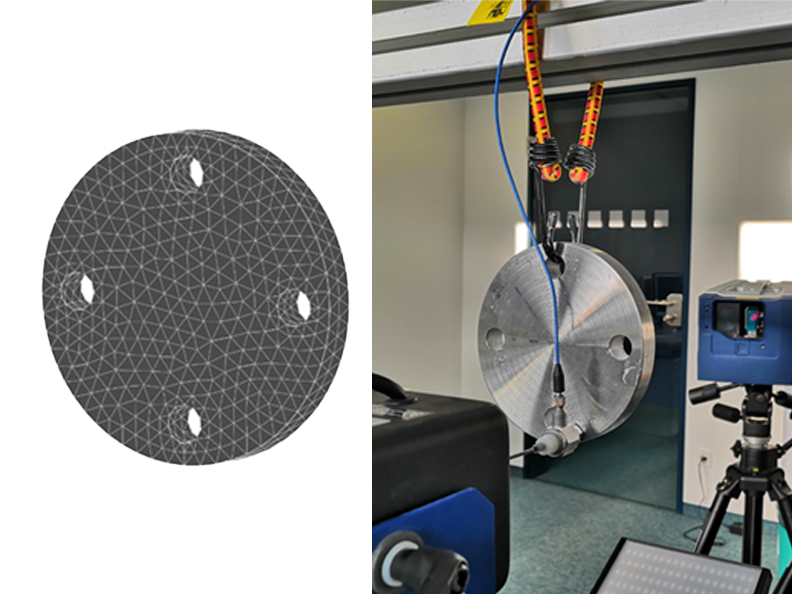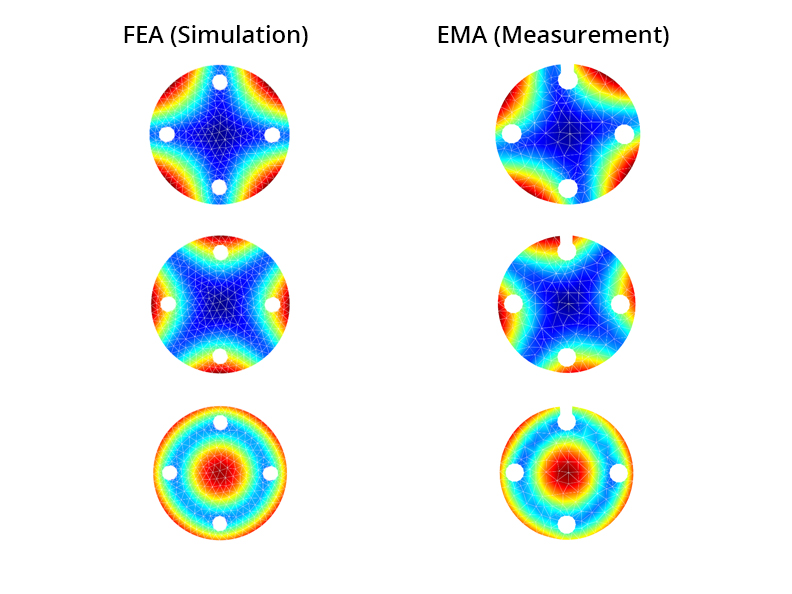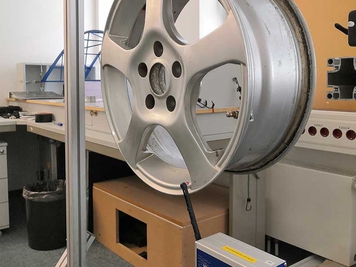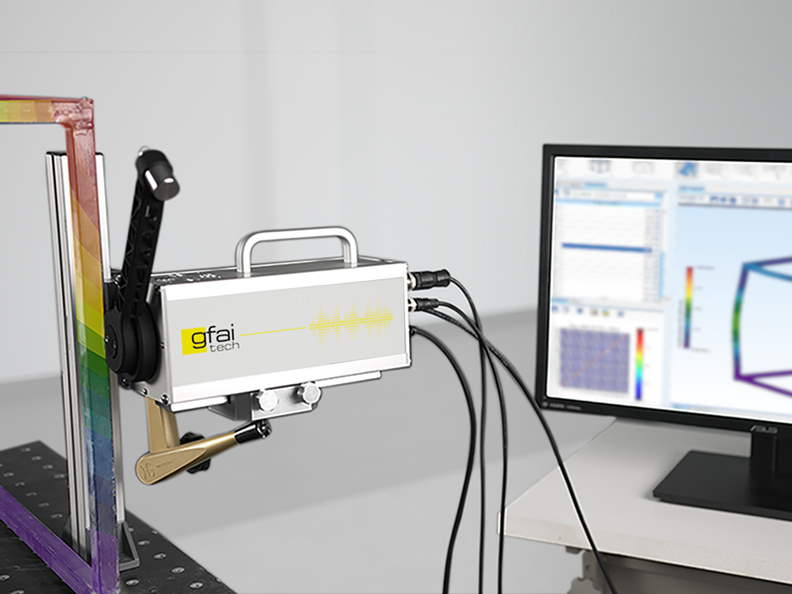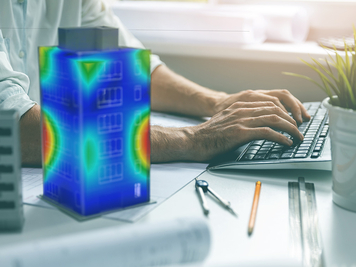Finite Element Model Updating (FEMU) was applied to the model of a blind flange to improve FE simulation accuracy. Model updating is used to optimize the accuracy of the initial FE model so that the predicted dynamic behavior matches as closely as possible that observed through experiment. Finite Element Analysis (FEA) on the structure was therefore performed in parallel with Experimental Modal Analysis (EMA) on the original component.
With the aid of a solid model identical to the original component, the input of the specific material properties of stainless steel and the imposition of free boundary conditions, it was possible to create a corresponding FE model (Figure 1, left) for the FEA. Numerical calculation of the modal parameters yielded the natural frequencies listed in Table 1 (left) and the vibration modes associated with them in Figure 2 (left column) for the first three natural modes of the structure. To optimize the simulative results, the modal values from an experiment were to be obtained using the real structure. For this purpose, the flange was elastically suspended from a profile frame to simulate the assumed free boundary conditions from the FE simulation. A wide-band excitation of the structure was performed by a coupled modal shaker on the rear side, while the structural responses were recorded at more than 200 measurement points by a laser scanning vibrometer (LSV) (Figure 1, right).

